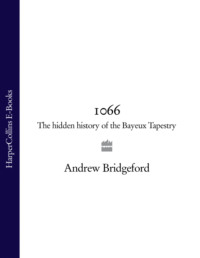1066: The Hidden History of the Bayeux Tapestry

Полная версия
1066: The Hidden History of the Bayeux Tapestry
Язык: Английский
Год издания: 2018
Добавлена:
Настройки чтения
Размер шрифта
Высота строк
Поля
Конец ознакомительного фрагмента
Купить и скачать всю книгу

